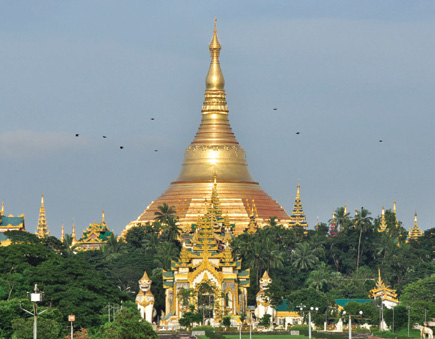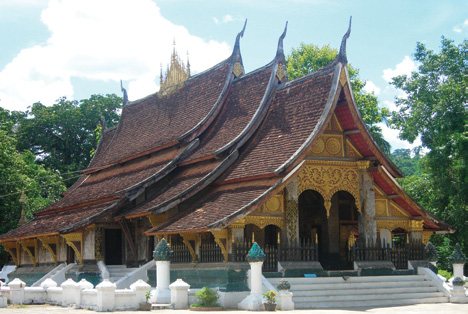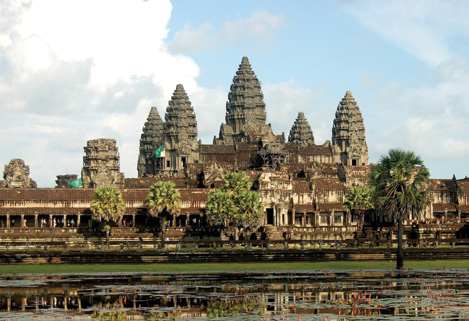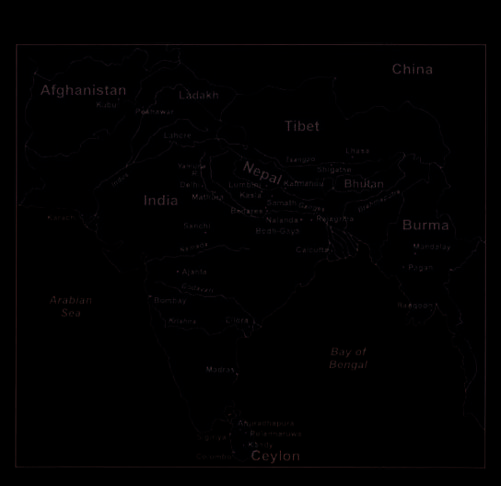An Illustrated Outline of Buddhism: The Essentials of Buddhist Spirituality (26 page)
Read An Illustrated Outline of Buddhism: The Essentials of Buddhist Spirituality Online
Authors: William Stoddart,Joseph A. Fitzgerald
Tags: #Philosophy


The Introduction of Buddhism into the Theravada Countries
85
Shwedagon Pagoda, Burma, 6th century B.C.
The Wat Phra Singh Temple, Thailand, 14th century



86
An Illustrated Outline of Buddhism
Angkor Wat, Cambodia, 12th century
Wat Xieng Thong, Laos, 16th century



The Introduction of Buddhism into the Theravada Countries
87
Map of India and Neighboring Countries
(circa 1900)


88
An Illustrated Outline of Buddhism
Potala Palace, Lhasa,Tibet
Husbands should respect their wives, and comply as far as pos-
sible with their requests. They should not commit adultery. They
should give their wives full charge of the home, and supply them
with fine clothes and jewelry as far as their means permit. Wives
should be thorough in their duties, gentle and kind to the whole
household, chaste, and careful in housekeeping, and should car-
ry out their work with skill and enthusiasm.
A man should be generous to his friends, speak kindly to
them, act in their interests in every way possible, treat them
as his equals, and keep his word to them. They in turn should
watch over his interests and property, take care of him when he
is off his guard, stand by him and help him in time of trouble,
and respect other members of his family.
Employers should treat their servants and workpeople de-
cently. They should not be given tasks beyond their strength.
They should receive adequate food and wages, be cared for in
time of sickness and infirmity, and be given regular holidays and
bonuses in time of prosperity. They should rise early and go to
bed late in the service of their master, be content with their just
wages, work thoroughly, and maintain their master’s reputation.
Dīgha-Nikāya, iii, 181ff


89
(17) Tibet
i. The Introduction of Buddhism into Tibet
Buddhism was first introduced into Tibet in the seventh century A.D.
by King Songtsen Gampo, who was looked on as an incarnation of
Avalokiteshvara (Chenrezig). Two princesses whom he married, one
from Nepal and one from China, were considered to be incarnations
of the supreme feminine principle Tārā—respectively “green Tārā” and
“white Tārā”, representing two complementary modes of celestial fa-
vors. (See p. 72.)
For a time Buddhism contended with the earlier religion of Bön,
but in 791 A.D. King Trisong Detsen issued an edict declaring Bud-
dhism to be the official religion of the country. The king was still faced
with the rivalry of two Buddhist sects, the “Gradual Path” (combin-
ing elements of
Sarvāstivāda
and
Vajrayāna
)
which had come from
India and the “Sudden Path” (
Dhyāna
or
Ch’an
) which had come
from China. The king invited the Indian monk Kamalashīla and the
Chinese monk Mahāyāna to expound before him their respective
